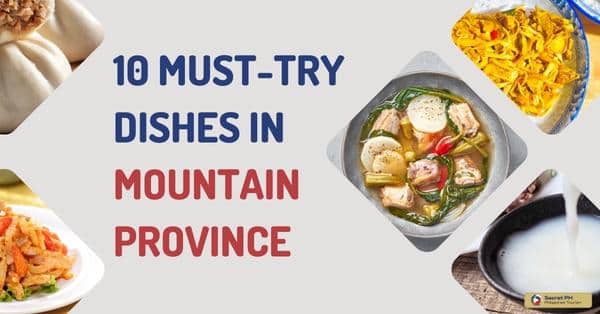Discover the rich and diverse flavors of Filipino cuisine, from savory Adobo to sour Sinigang and regional specialties like Lechon and Pancit. Indulge in the classic dessert Halo-Halo, and learn where to find the best Filipino restaurants or how to make traditional dishes at home with this Foodie’s Guide to the Best Filipino Cuisine.
This guide will explore the history of Filipino food, popular dishes, regional specialties, and tips on how to cook traditional Filipino dishes at home. Bon appétit!

The Evolution of Filipino Cuisine
The evolution of Filipino cuisine is a result of the country’s complex history and diverse cultural influences. The Philippines was once a melting pot of different civilizations, including Malay, Chinese, Spanish, and American, among others. Each of these cultures brought its own ingredients, cooking techniques, and flavor profiles, resulting in a unique culinary landscape that continues to evolve to this day.
As the country continues to modernize and become more globalized, Filipino cuisine has also adapted to changing tastes and preferences. While traditional dishes like Adobo and Sinigang remain popular, younger generations of Filipino chefs and foodies are also experimenting with fusion cuisine and incorporating international flavors. With this ongoing evolution, Filipino cuisine remains a vibrant and dynamic part of the country’s cultural heritage.
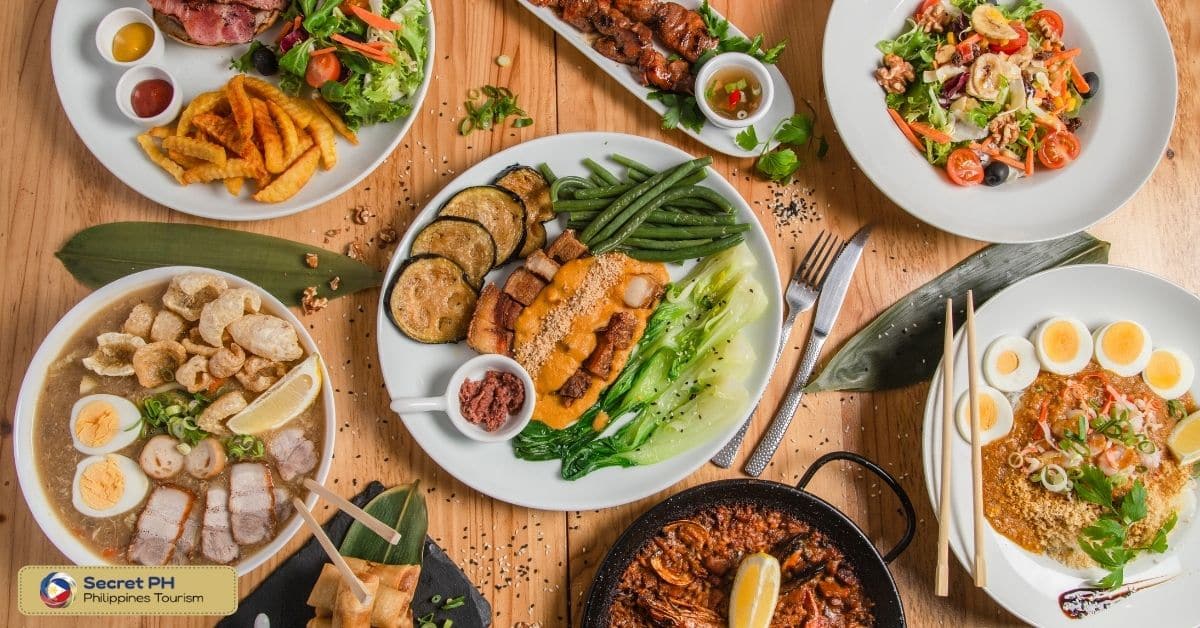
Adobo: The Unofficial National Dish
Adobo is widely considered as the unofficial national dish of the Philippines. This savory stew is typically made with chicken or pork, marinated in a mixture of vinegar, soy sauce, garlic, and other spices. It is then slow-cooked until the meat becomes tender and flavorful, resulting in a dish that is both tangy and salty.
The versatility of Adobo has made it a favorite among Filipinos, as it can be enjoyed on its own or paired with rice and other sides. It is also commonly served during special occasions and family gatherings. Despite its widespread popularity, the recipe for Adobo can vary depending on the region or family tradition, showcasing the diversity and richness of Filipino cuisine.
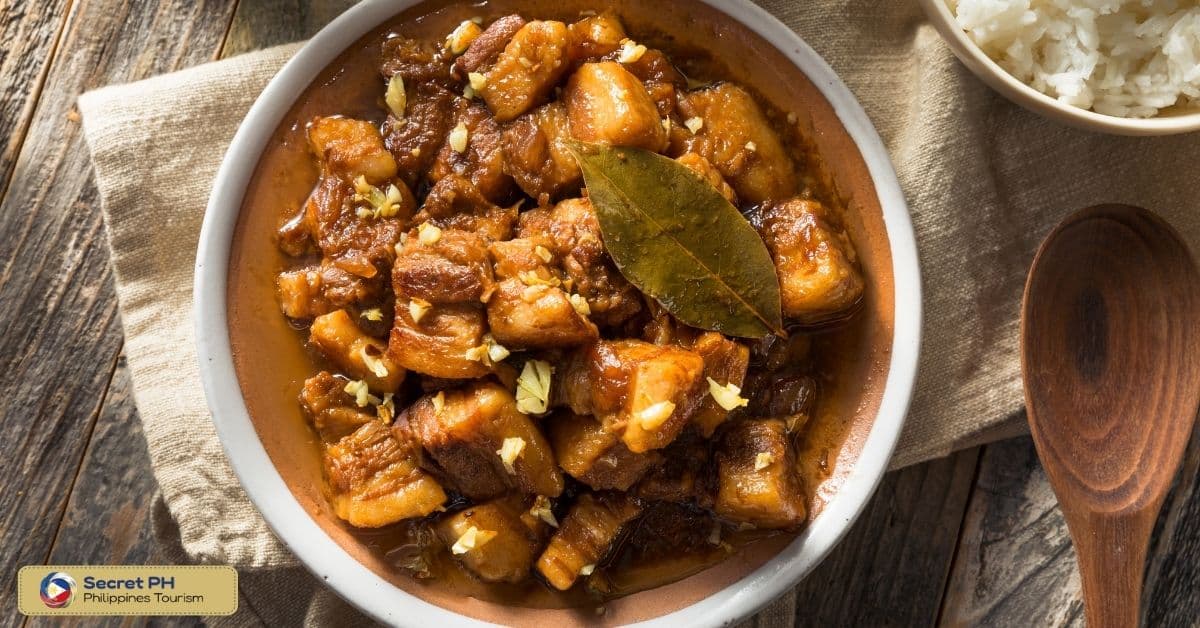
Sinigang: The Ultimate Comfort Food
Sinigang is a sour soup that is widely regarded as one of the ultimate comfort foods in the Philippines. This hearty dish typically includes a variety of meats or seafood, vegetables, and a souring agent such as tamarind, guava, or calamansi. The result is a deliciously tangy and savory soup that is both filling and satisfying.
Sinigang is a popular dish all year round, but it is especially enjoyed during the rainy season or colder months, as it provides warmth and comfort. It is also known for its health benefits, as the souring agent is believed to aid in digestion and boost the immune system. Whether enjoyed at home with family or in a restaurant with friends, Sinigang is a quintessential Filipino dish that is sure to bring comfort and joy to any foodie’s palate.
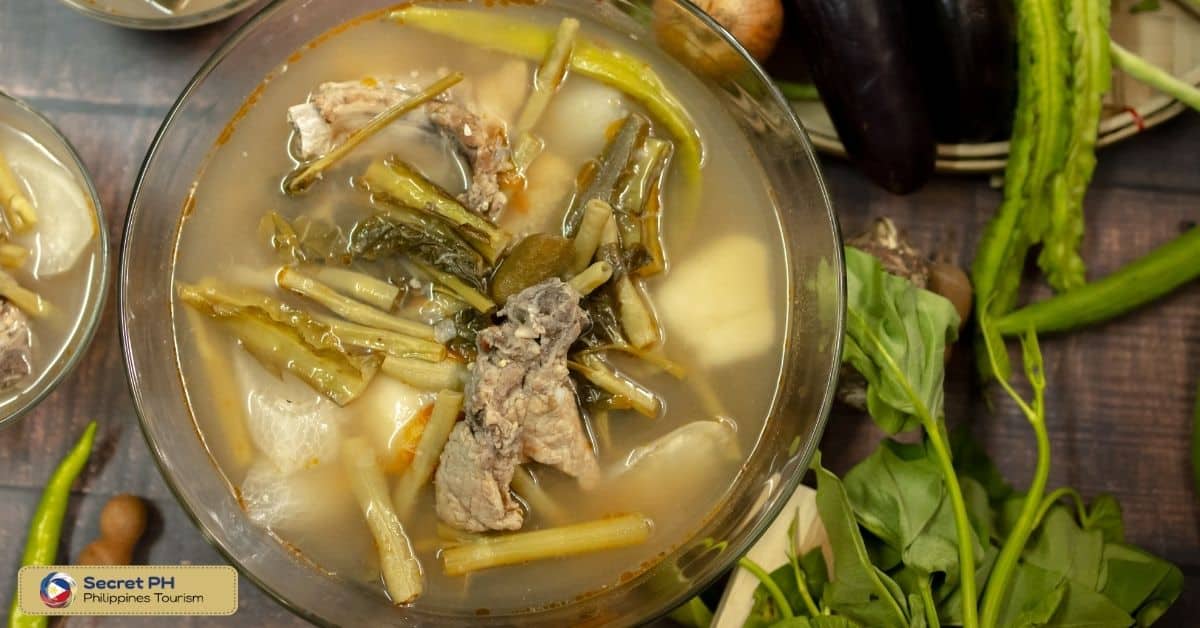
Lechon: The King of Filipino Roasts
Lechon is often referred to as the “King of Filipino Roasts,” and for good reason. This succulent roasted pig is a centerpiece of many Filipino celebrations, from birthdays and weddings to fiestas and other special occasions. The skin of the pig is crispy and crackling, while the meat inside is tender and flavorful.
Lechon is traditionally cooked over an open flame for several hours, with the skin basted with a mixture of seasonings and vinegar to enhance the flavor. It is typically served with a variety of sides, including rice, vegetables, and dipping sauces.
While Lechon is often associated with celebrations, it can also be enjoyed as a regular meal, with many specialty Lechon restaurants popping up all over the country. With its irresistible aroma and delicious taste, Lechon truly deserves its title as the “King of Filipino Roasts.”
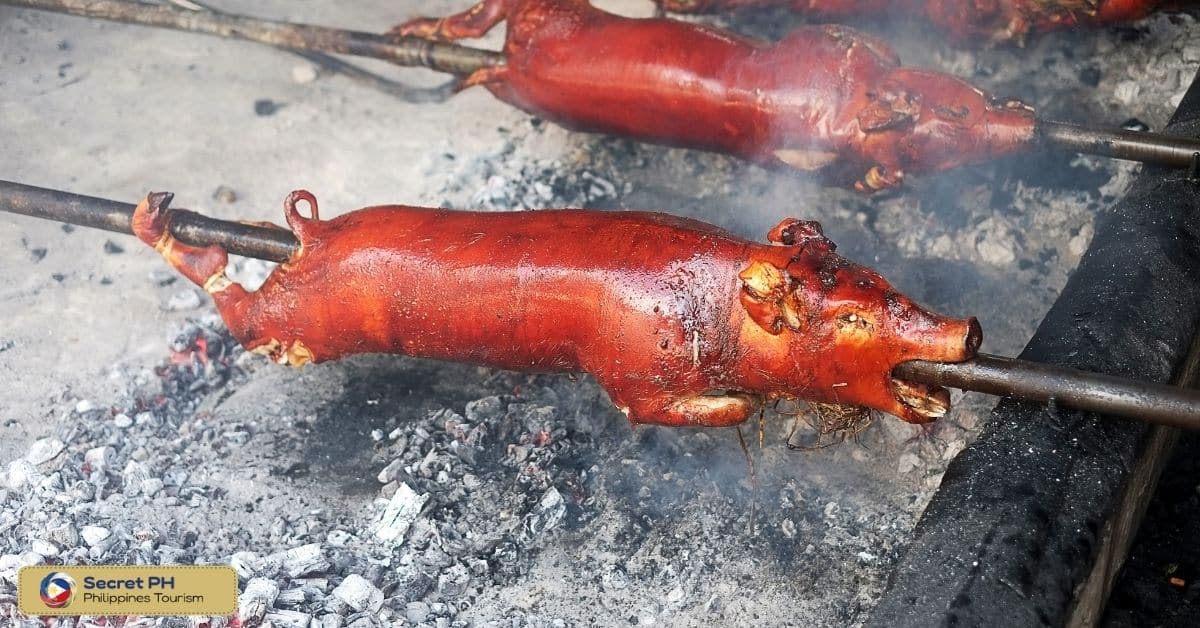
Pancit: The Beloved Filipino Noodle Dish
Pancit is a beloved noodle dish that is a staple in many Filipino households. This dish features thin rice noodles that are stir-fried with meat, vegetables and a variety of seasonings and sauces. The result is a delicious and filling dish that can be enjoyed as a main course or a side dish.
Pancit is often served during special occasions and celebrations, as it is believed to bring good luck and longevity. The dish has many regional variations, with each province and family having their own unique way of preparing it.
Some popular variations include Pancit Bihon, made with chicken and vegetables, and Pancit Palabok, a seafood-based noodle dish with a bright orange sauce. With its versatility and delicious taste, it’s no wonder why Pancit has become such a beloved and iconic Filipino dish.
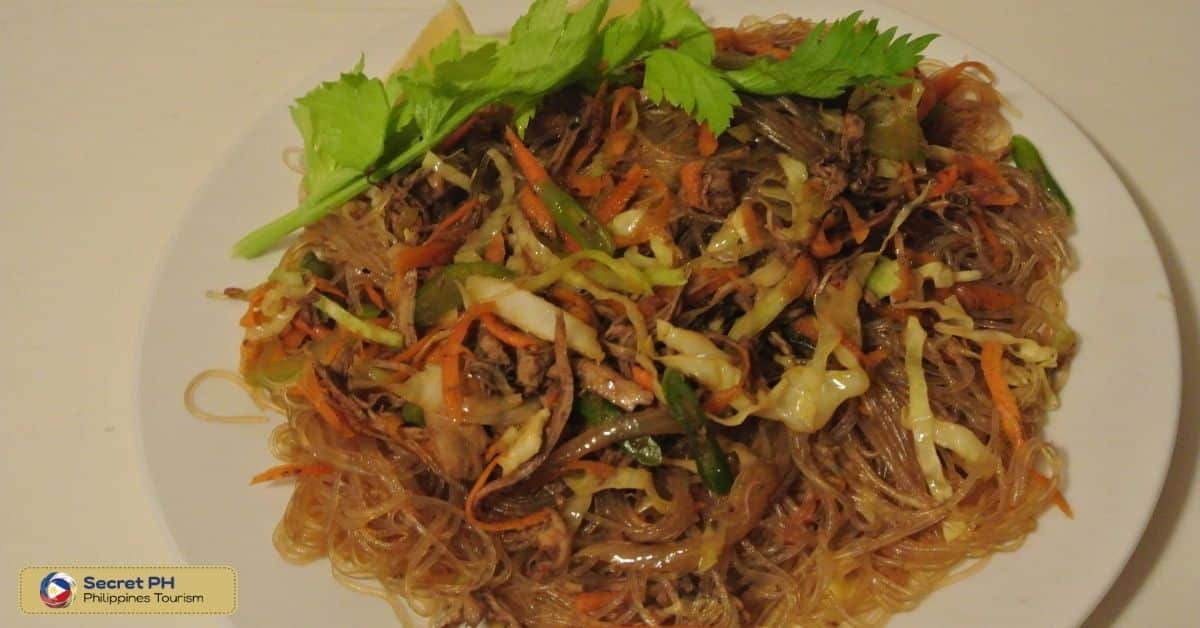
Halo-Halo: The Classic Filipino Dessert
Halo-Halo is a classic Filipino dessert that has become a symbol of Filipino culture and cuisine. The name “Halo-Halo” literally translates to “mix-mix,” which refers to the way the dessert is made by mixing together various ingredients.
These ingredients typically include shaved ice, evaporated milk, and a variety of fruits, jellies, and sweet beans. The result is a colorful and refreshing dessert that is perfect for hot and humid weather.
Halo-Halo has a long history in the Philippines, with some accounts tracing its origins back to pre-colonial times. It has since evolved to become a beloved dessert that is enjoyed all over the country and beyond.
In recent years, it has also gained popularity abroad, with many Filipino restaurants and dessert shops offering their own unique take on this classic treat. Whether enjoyed as a simple snack or a decadent dessert, Halo-Halo is a must-try for any foodie looking to explore the rich and diverse world of Filipino cuisine.

Exploring Regional Filipino Cuisine
The Philippines is a large and diverse country, consisting of more than 7,000 islands. Each region has its own unique culinary culture and traditions, resulting in a variety of regional dishes that reflect the local ingredients and flavors of each area. From the savory adobo of Luzon to the sweet desserts of Mindanao, exploring regional Filipino cuisine is a great way to get a taste of the country’s rich culinary history.
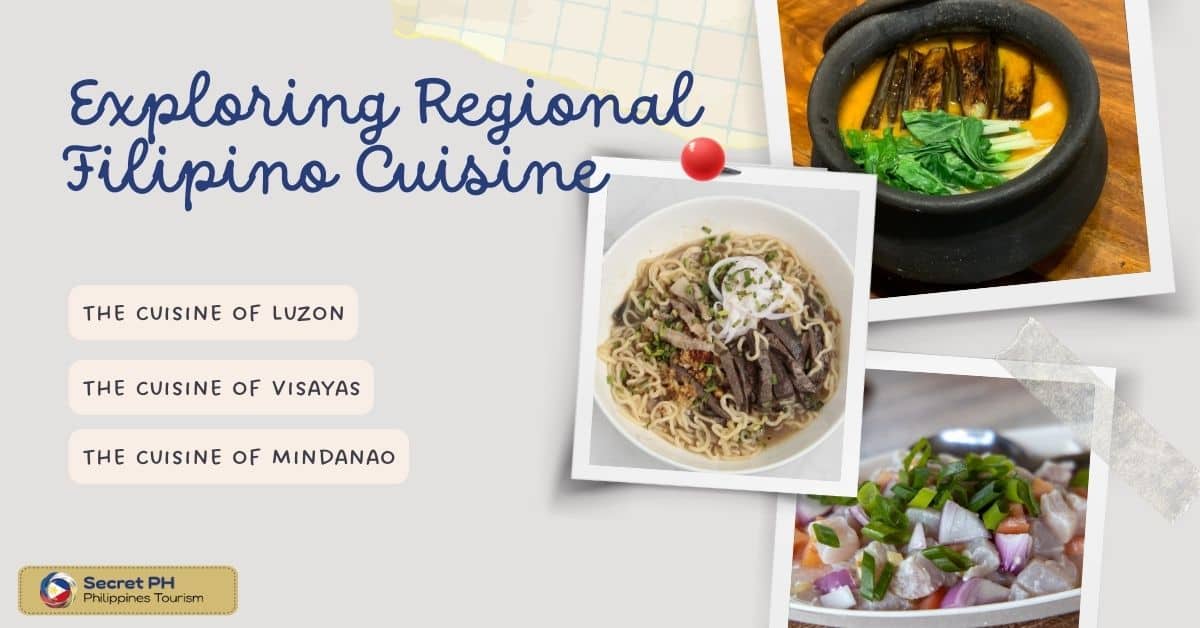
The Cuisine of Luzon
Luzon is the largest island in the Philippines and is home to a variety of regional cuisines. Each regional cuisine reflects the local ingredients and flavors of Luzon, making it a great destination for foodies looking to explore the diverse range of tastes in the Philippines.
Machado: A type of stew made with a tomato-based sauce, potatoes, and beef or pork simmered until tender.
Pinakbet: A vegetable dish made with eggplant, squash, okra, and bitter melon cooked in fish or shrimp broth.
Kare Kare: A stew made with oxtail or beef and vegetables cooked in a peanut-based sauce.
Bulalo: A type of soup made with beef shank, marrow bones, and vegetables cooked in a flavorful broth.
Sinangag: Fried garlic rice served as an accompaniment to other dishes like Adobo or Sinigang.
Sisig: A sizzling plate of diced pork or chicken, onions, garlic, and chili peppers cooked in a special sauce.
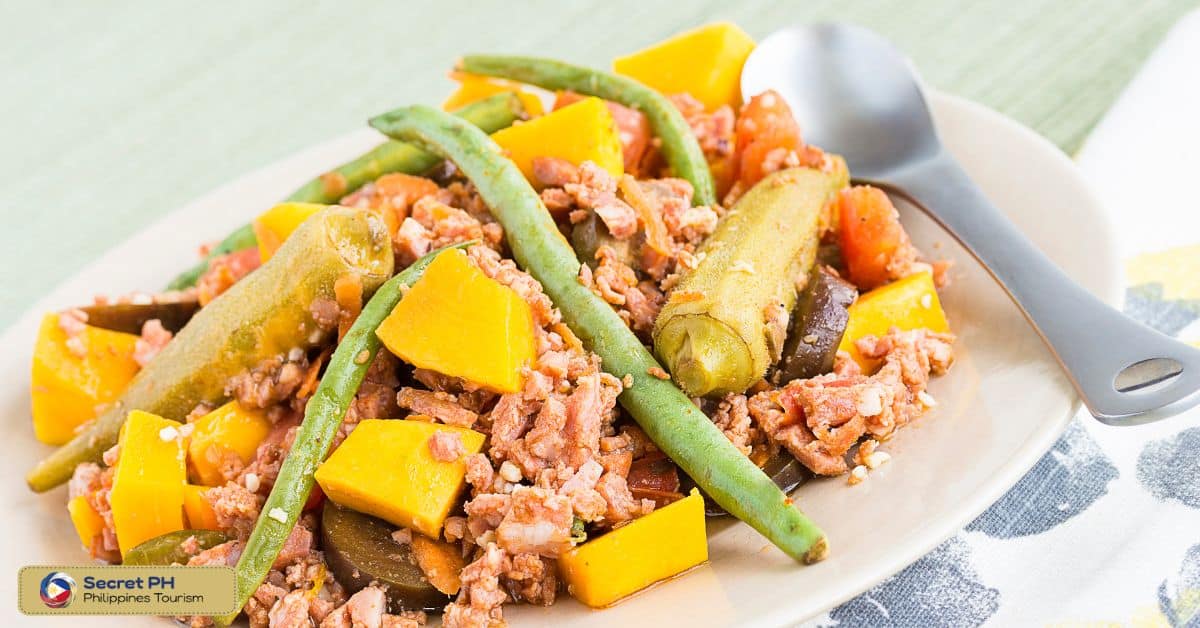
The Cuisine of Visayas
The Cuisine of Visayas is a delicious blend of regional specialties and flavors that reflect the diverse culture and history of the area. With its abundance of local ingredients, Visayas is an ideal destination for foodies looking to explore the rich culinary traditions of this region.
Kinilaw: A type of ceviche made with raw fish or seafood marinated in vinegar, lime juice, and a variety of spices.
Carajay: Grilled pork belly served with a special soy-based sauce spiked with garlic, ginger, and chili peppers.
La Paz Batchoy: A thicker version of the classic Batchoy with pork cracklings and liver added to the mix.
Roasted Chicken Inasal: Marinated chicken cooked over an open fire until perfectly charred and juicy.
Pancit Molo: Wonton-style dumplings served in a flavorful broth made with chicken, pork, mushrooms, and vegetables.
Dinuguan: A savory stew made with pork offal cooked in a rich and spicy sauce.
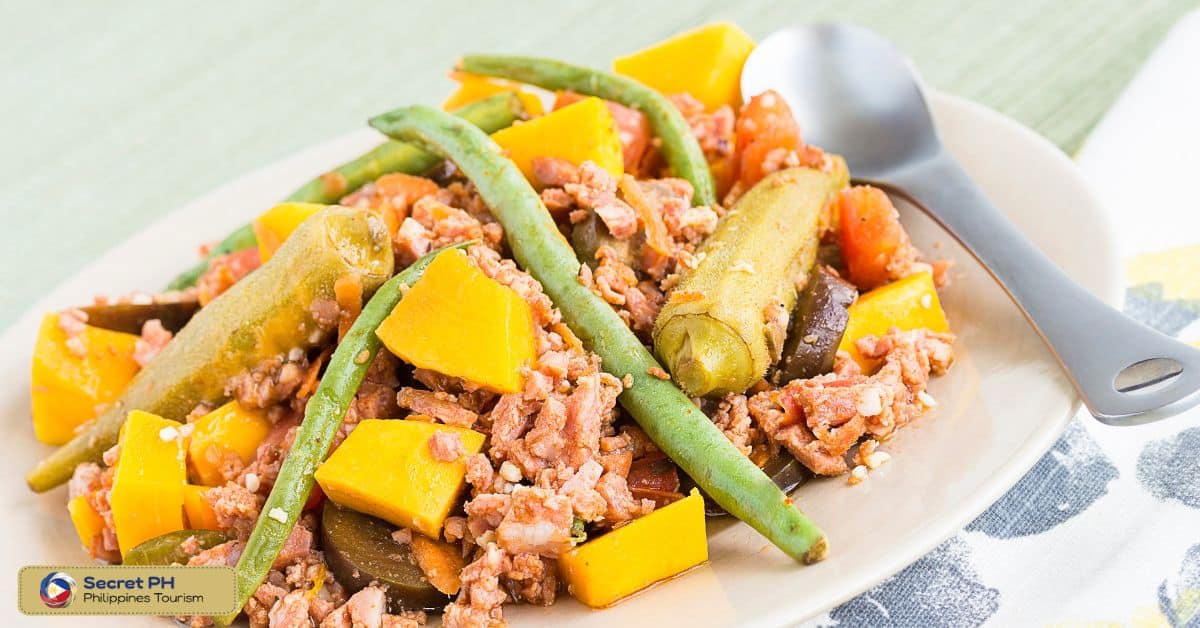
The Cuisine of Mindanao
Mindanao is the second largest island in the Philippines and is home to a diverse array of regional cuisines. Exploring the unique flavors of Mindanao is an essential part of a foodie’s journey. Here are some of the top dishes to try in this vibrant region.
Tinola: A type of soup made with chicken, vegetables, and ginger that is traditionally served with rice.
Kinilaw na Tanigue: A type of ceviche made with fresh tanigue (mackerel) marinated in a mixture of vinegar and spices.
Burong Talong: A type of pickled eggplant made with salted eggplant and coconut vinegar.
Apritada: A tomato-based stew with chicken, pork, or seafood cooked in a variety of spices and herbs.
Chicken Piyanggang: Marinated chicken pieces grilled to perfection and served with a rich coconut-based sauce.
Tamales: Sticky rice steamed in banana leaves and served with a variety of sweet or savory fillings.
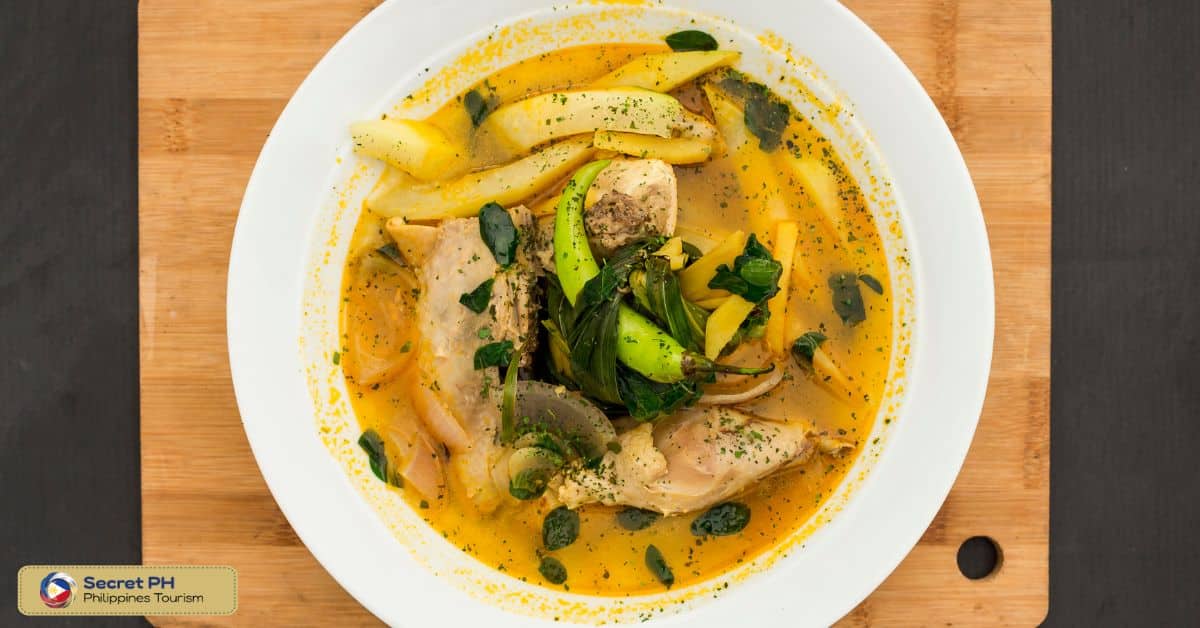
Vegetarian and Vegan Options in Filipino Cuisine
Despite the popular perception of Filipino cuisine as being predominantly meat-based, there is actually a wide variety of vegetarian and vegan options available. From plant-based proteins to colorful vegetable dishes, vegan and vegetarian Filipino food can be just as flavorful and satisfying as its non-vegetarian counterparts. Here are some of the must-try vegetarian and vegan dishes in Filipino cuisine.

Veggie-Based Proteins
Veggie-based proteins are becoming increasingly popular in Filipino cuisine, offering a tasty and nutritious alternative to traditional animal proteins. These plant-based options include tofu, tempeh, seitan, and other meat substitutes that can be cooked and prepared in the same way as their animal counterparts.
1. Tofu – A versatile and protein-rich ingredient that can be cooked in a variety of ways, from stir-fries to stews.
2. Tempeh – A fermented soybean cake with a nutty flavor, often used as a meat substitute in Filipino dishes.
3. Seitan – A high-protein meat alternative made from wheat gluten, often used in vegan versions of Adobo and other Filipino dishes.
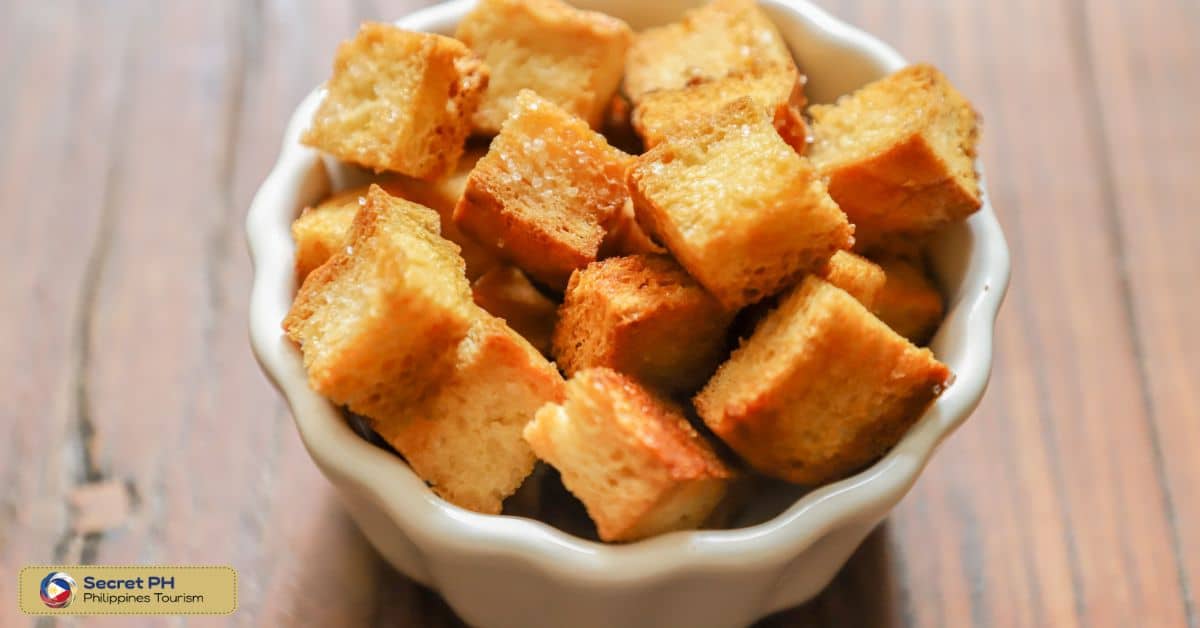
Vegetable Dishes
Vegetables are an integral part of Filipino cuisine, offering a variety of flavors and textures that can be enjoyed as main dishes or accompaniments to meat-based meals. From stir-fries and salads to soups and stews, there is no shortage of delicious vegetable dishes in the Philippines.
1. Pinakbet – A vegetable dish with eggplant, squash, okra, and bitter melon cooked in a flavorful fish or shrimp broth.
2. Ensaladang Talong – Grilled eggplant topped with tomatoes, onions, and a tangy-sour fish sauce.
3. Lumpiang Sariwa – Fresh spring rolls filled with shredded vegetables and served with sweet-tangy peanut sauce.
4. Laing – Taro leaves cooked in coconut milk and spices, resulting in a flavorful and comforting dish.
5. Guinataang Gulay – A rich and savory vegetable stew cooked in coconut milk and topped with chili peppers for a spicy kick.
6. Sinampalukang Manok – Sour soup made with chicken, tamarind, and vegetables such as okra and eggplant.
7. Ginataang Langka – A creamy vegetable dish made with unripe jackfruit cooked in coconut milk and seasonings.
8. Dinengdeng – A type of soup with vegetables and fish or shrimp cooked in a sour broth.
9. Kalabasa Soup – An earthy and flavorful soup made with squash, peanuts, coconut milk, and spices.
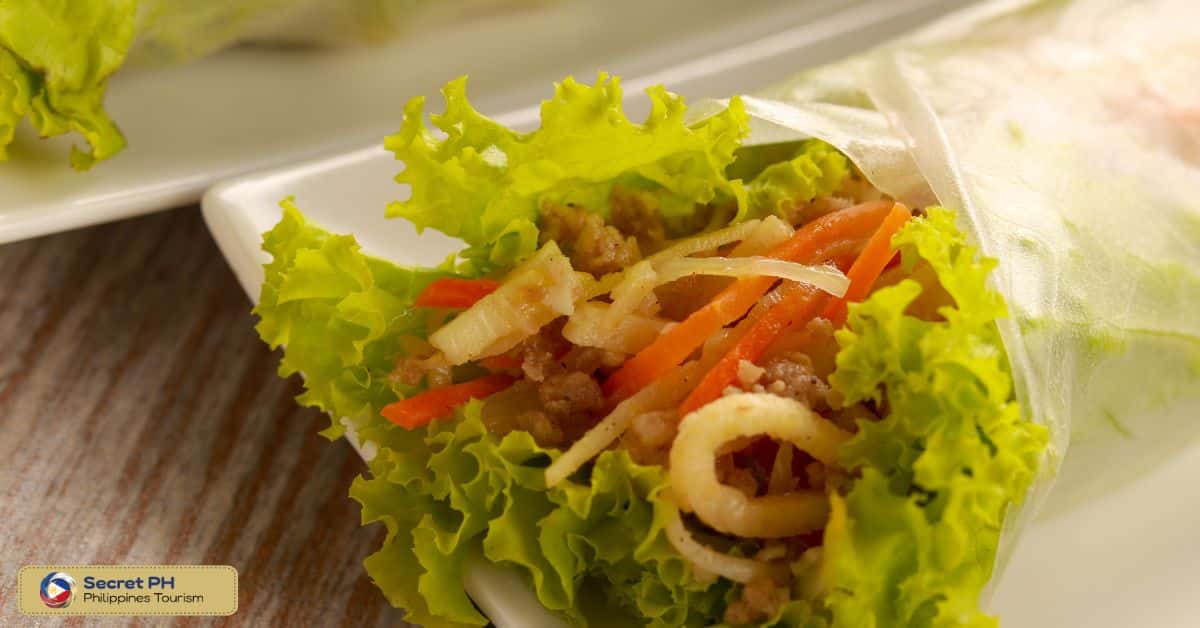
Fruit Dishes
Fruit dishes are a great way to add some sweetness and color to your meals. From tropical fruits like mangoes and jackfruit to the tart citrusy flavors of calamansi, Filipino cuisine offers an abundance of delicious fruit-based dishes.
1. Mango Float – Layers of sweetened graham crackers topped with whipped cream, mangoes, and jelly cubes for a creamy and fruity dessert.
2. Turon – Sweet spring rolls filled with fresh bananas and jackfruit, then deep-fried to a golden brown.
3. Buko Pie – A decadent pie made with young coconut and custard, often served with a scoop of ice cream.
4. Ginataang Papaya – Green papaya cooked in a creamy coconut milk sauce and served with a side of steamed white rice.
5. Atis con Leche – Sweetened cooked atis (sugar apple) puree mixed with condensed milk for an indulgent dessert.
6. Guinumis – A tropical fruit punch made with ripe mangoes, bananas, watermelon, and other fruits in coconut milk.
7. Ensaladang Mangga – A simple salad made with green mangoes, tomatoes, onions, and a tangy-sour fish sauce.
8. Calamansi Juice – Refreshing juice made with fresh calamansi (a hybrid of lime and citrus) and sugar.
9. Buko Salad – A sweet and creamy fruit salad made with young coconut, gelatin, condensed milk, and a fruit cocktail.
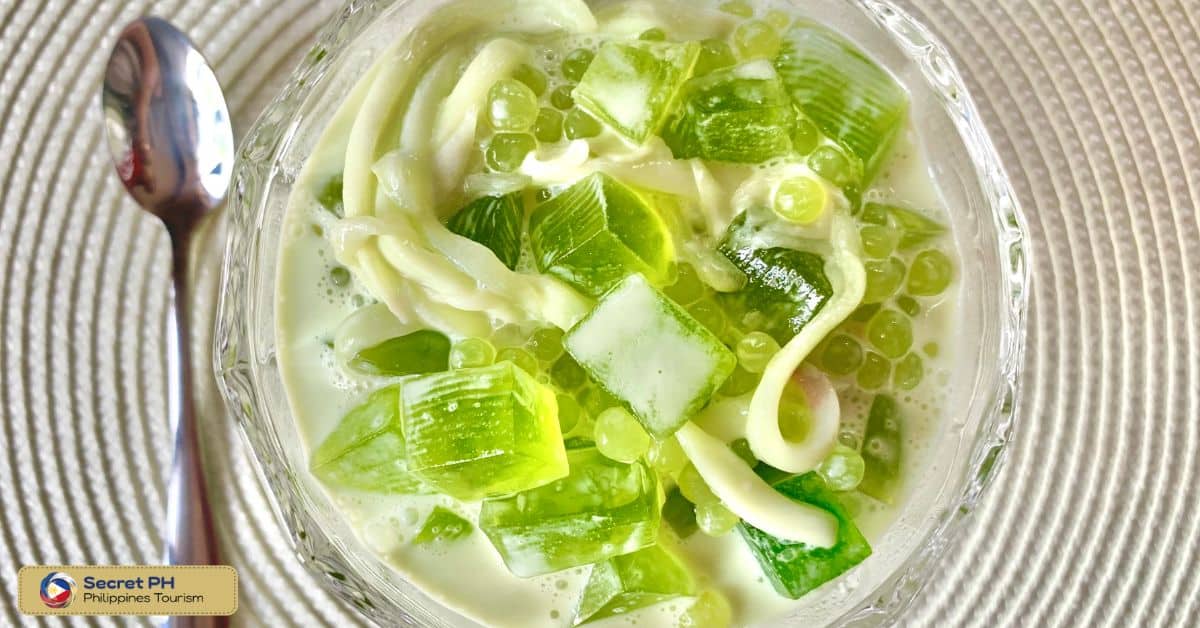
Popular Filipino Restaurants and Where to Find Them
The Philippines is home to a vibrant and diverse culinary culture, offering an array of unique dishes that reflect the country’s history and heritage. From classic street food dishes to regional specialties, Filipino cuisine has something for everyone to enjoy. Whether you’re exploring the islands or living in one of the major cities, here are some of the popular Filipino restaurants and where to find them.
In Manila
Manila is the capital of the Philippines, offering an abundance of local flavors for foodies to explore. Here are some of the popular Filipino restaurants in Manila that you should check out:
Lampara
Lampara is a Filipino-style restaurant in Manila that specializes in home-style comfort dishes from all over the Philippines. The menu features traditional Filipino favorites like Lechon, Kare Kare, and Sinigang as well as unique regional specialties such as Carajay and Dinuguan.
For dessert, there’s Halo-Halo, Buko Pie, and Turon. The restaurant is known for its friendly service, cozy atmosphere, and delicious home-style cooking that will delight even the most discerning of palates. With its mouthwatering dishes and cozy atmosphere, Lampara is the perfect place to experience traditional Filipino cuisine.
Address: 5883 Enriquez, Makati, 1210 Metro Manila
Opening Hours: 5 AM–11:30 PM
Phone: +63917 173 5883
For pictures, booking, and more information, click here.
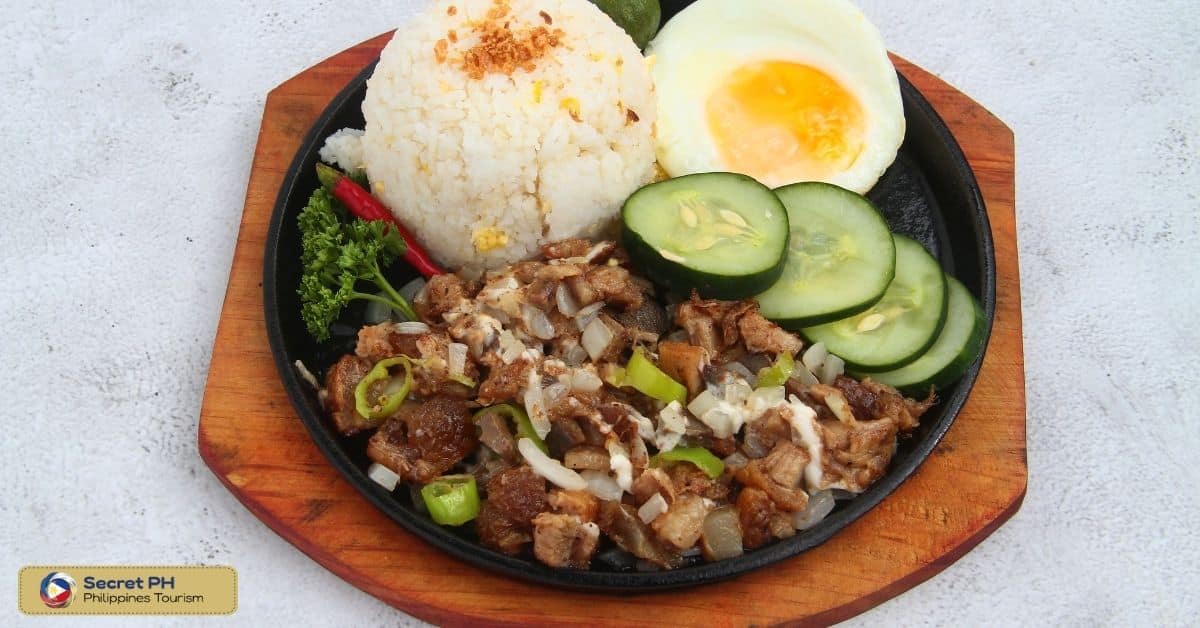
Ilustrado Restaurant
Ilustrado Restaurant is one of the most popular Filipino restaurants in Manila. Located at Intramuros, this restaurant has been serving traditional Filipino cuisine since 1875. The restaurant offers an extensive menu featuring classic dishes such as adobo and kare-kare, modern interpretations of regional specialties, and a selection of desserts.
The restaurant also features a Filipino-inspired cocktail menu, with drinks made with local ingredients such as calamansi and coconut. With its rich history and delicious food, Ilustrado Restaurant is the perfect spot for anyone looking to explore the best of Filipino cuisine.
Address: 744 General Luna St, Intramuros, Manila, 1002 Metro Manila
Opening Hours: 8 AM–10 PM
Phone: (02) 8527 2345
For pictures, booking, and more information, click here.
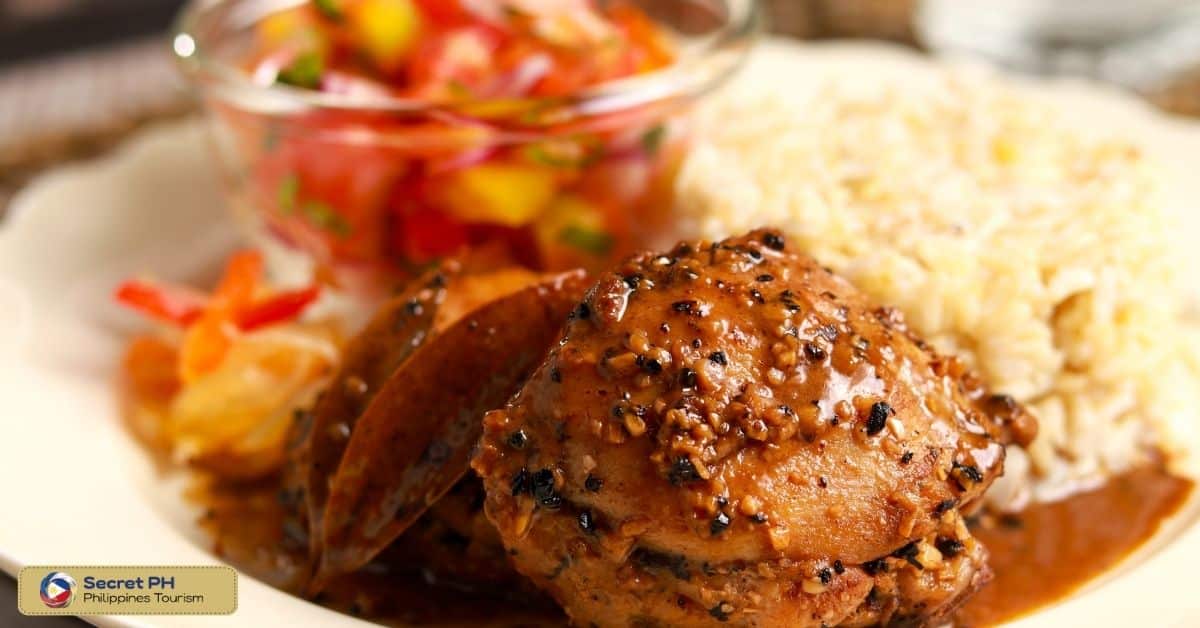
Emilia- House of Filipino Food
Emilia- House of Filipino Food is a family-owned restaurant located in the heart of Manila that serves traditional Filipino dishes. This popular eatery has been serving hungry locals since 1987, offering an authentic taste of old-fashioned home cooking. The menu consists of classic dishes like sisig and kare-kare, as well as innovative offerings such as adobo nachos and fish tacos.
The restaurant also prides itself on its use of fresh, locally sourced ingredients to ensure the highest quality meals. With a relaxed atmosphere and friendly service, Emilia is an ideal spot for a hearty meal with family or friends. It’s no wonder why this popular spot continues to be one of the most beloved Filipino restaurants in Manila.
Address: 934 Gen. Solano St, San Miguel, Manila, 1005 Metro Manila
Opening Hours: 10 AM–9 PM
Phone: (02) 8527 7051
For directions, click here.
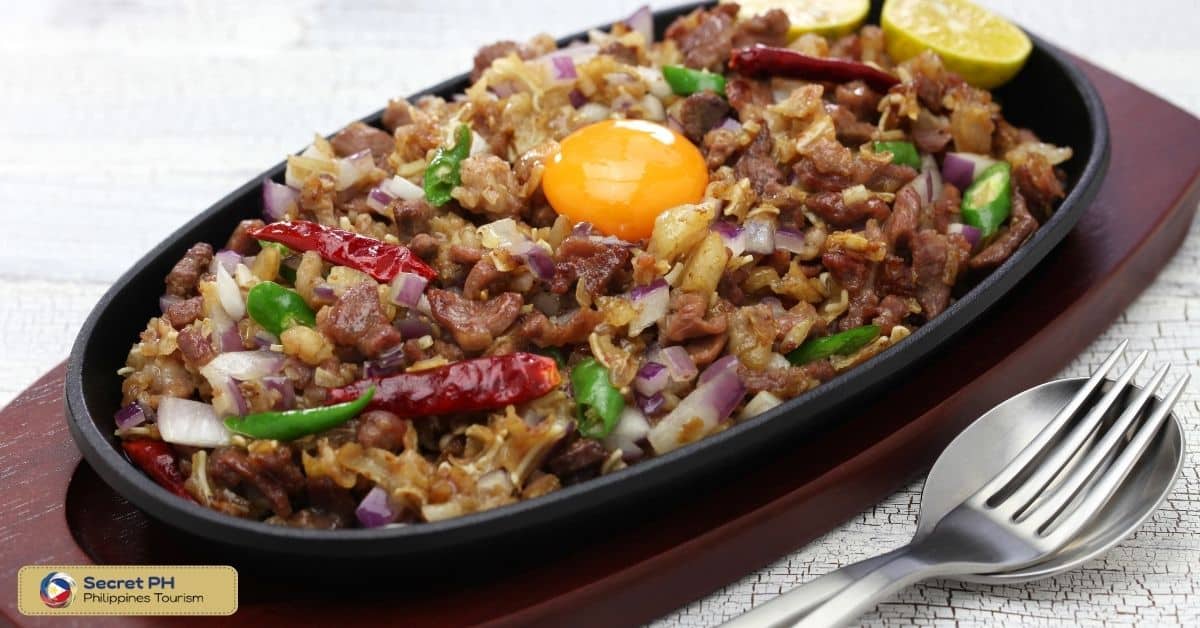
In Cebu
Cebu is one of the most popular tourist destinations in the Philippines, offering a variety of flavors to explore. Here are some of the best Filipino restaurants in Cebu City:
Hukad – Ayala Terraces
Hukad – Ayala Terraces is a popular Filipino restaurant located in the heart of Cebu City, offering an array of regional specialties and flavors. The menu features all-time favorites like Adobo, Sinigang, and other traditional dishes. Hukad also offers some unique dishes such as their signature Kinilaw Na Tanigue, a dish of fresh tanigue marinated in vinegar and spices.
With its relaxed ambiance and attentive service, Hukad – Ayala Terraces is the perfect place to enjoy authentic Filipino cuisine. The restaurant also offers take-out and delivery services, allowing customers to enjoy the flavors of Cebu even when they’re not in town.
Address: Ayala Center, Biliran Rd, Cebu City, Cebu
Opening Hours: 10:30 AM–9 PM
For pictures, booking, and more information, click here.
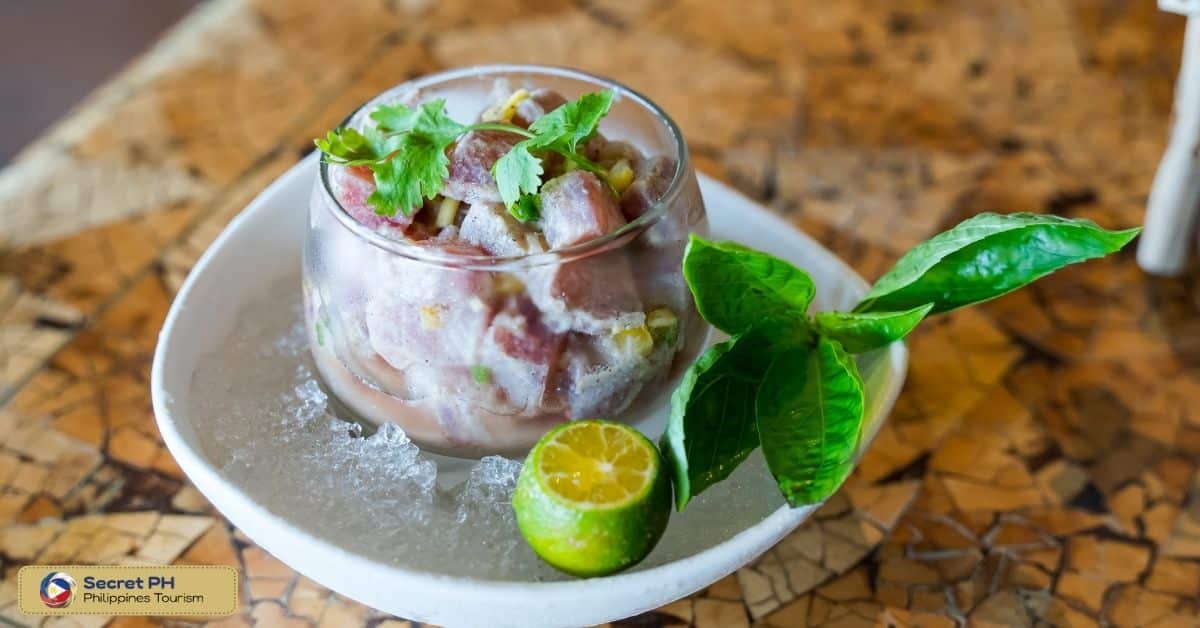
Chika-an Sa Cebu
Chika-an sa Cebu is an iconic restaurant located in the heart of Cebu City. It’s known for its traditional Filipino dishes, carefully prepared using fresh ingredients sourced from local markets. From classic dishes like adobo and sinigang to regional specialties such as lechon, Chika-an sa Cebu is the perfect place to explore authentic Filipino flavors.
The restaurant also offers a selection of vegan and vegetarian dishes, as well as an extensive dessert menu featuring local favorites such as mango float and turon. Whether you’re looking for a quick lunch or a leisurely dinner, Chika-an sa Cebu is sure to satisfy your cravings.
Address: 42 Salinas Dr, Cebu City, 6000 Cebu
Opening Hours: 10 AM–9 PM
Phone: (032) 233 0350
For directions, click here.
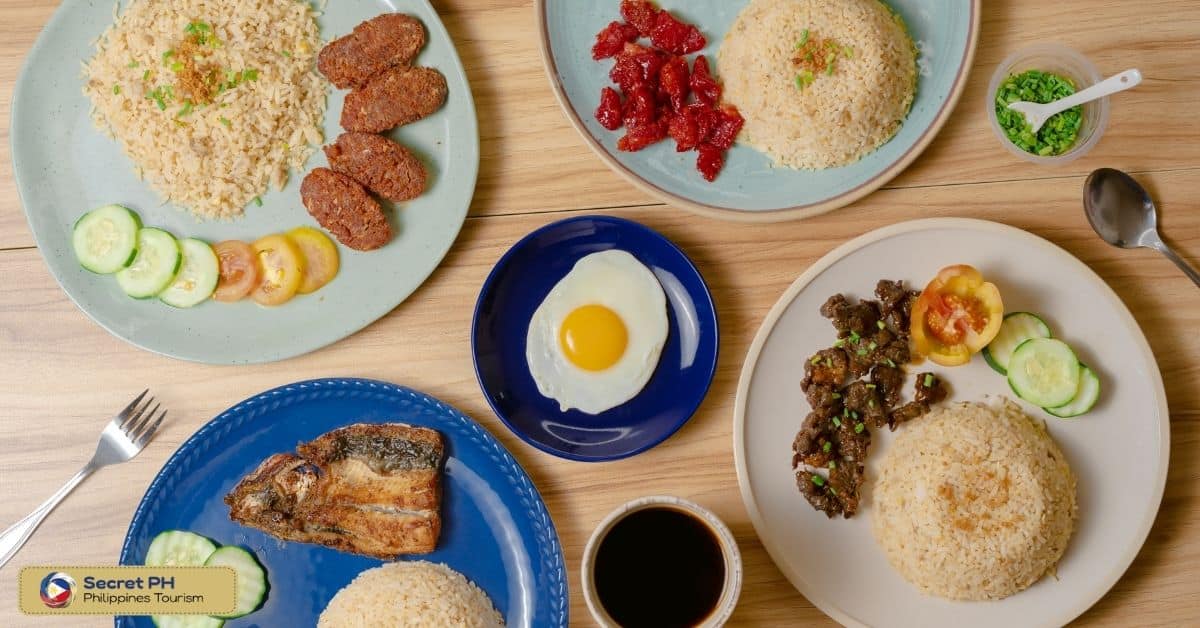
Boosog Lasang Pinoy
Boosog Lasang Pinoy is a restaurant located in Cebu City, Philippines. This restaurant is dedicated to serving authentic Filipino dishes and has been praised for its quality by local customers and visitors alike. The menu includes traditional favorites such as adobo, sinigang, and lechon, as well as more modern interpretations of classic dishes.
Boosog Lasang Pinoy also offers a variety of vegan and vegetarian options, making it a great choice for those looking to enjoy delicious Filipino cuisine without compromising their dietary restriction. Customers can also take advantage of the restaurant’s catering services, perfect for hosting events or just enjoying a special meal at home with friends and family.
Address: 8V6V+VXG, Juana Osmeña St, Cebu City, 6000 Cebu
Opening Hours: 10 AM–2 PM, 5–9 PM
Phone: (032) 239 7810
For pictures, booking, and more information, click here.
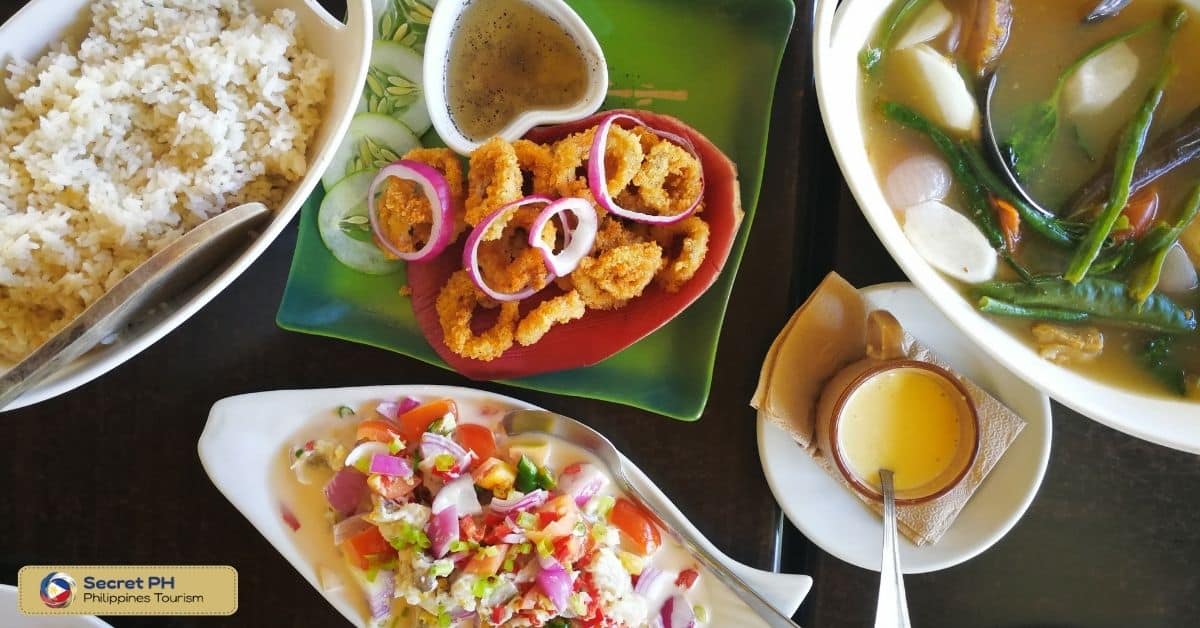
In Davao
Davao is the largest city in Mindanao and home to some of the best Filipino restaurants in the country. Here are some of the most popular places to explore:
Mesa Filipino Moderne
Mesa Filipino Moderne is a popular restaurant in Davao serving up authentic Filipino cuisine in a modern setting. From classic regional dishes to modern interpretations of traditional favorites, Mesa offers something for everyone to enjoy.
Located in Abreeza Mall, this restaurant has an extensive menu featuring some of the best local flavors from Mindanao and beyond. Whether it’s lunchtime or dinner, Mesa is the perfect spot for foodies looking to explore some of the unique flavors of Davao.
Address: SM City Davao Annex, 1st Floor, CityCity, Quimpo Blvd, Talomo, Davao City, 8000 Davao del Sur
Opening Hours: 10 AM–9 PM
For directions, click here.
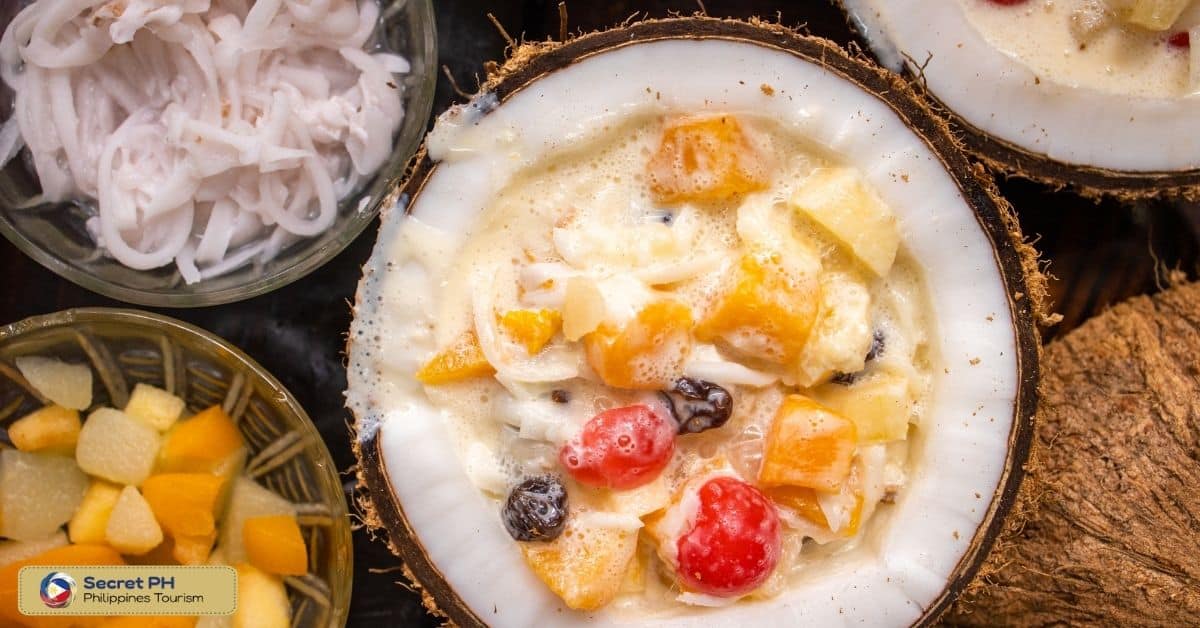
Lasa Best Filipino Cuisine
Lasa Best Filipino Cuisine is a popular chain of restaurants in Davao City that specializes in authentic Filipino cuisine. With its classic dishes and modern twists, Lasa Best offers something for everyone to enjoy. The restaurant’s menu is filled with classic mainstays such as sinigang, adobo, and kare-kare as well as regional dishes like kinilaw and piyanggang.
For dessert, there’s the classic halo-halo or a variety of other sweet treats such as turones de calamay and buko pie. Lasa Best also offers an array of vegetarian options such as tofu, tempeh, and seitan that can be cooked in the same way as their animal counterparts.
Address: 4JCM+M64, La Verna Bypass Road La Verna, High Street, Davao City, 8000
Opening Hours: 11 AM–9 PM
Phone: +63932 924 7777
For directions, click here.
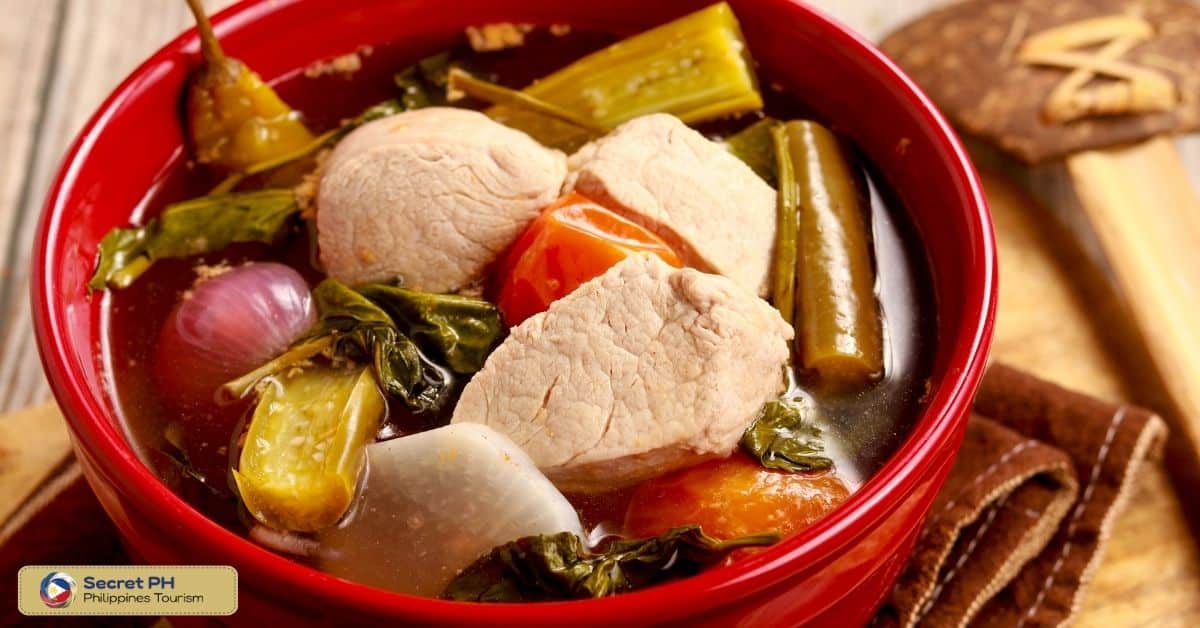
Rekado Filipino Comfort Cuisine
Rekado Filipino Comfort Cuisine is a beloved local eatery located in the heart of Davao City. This cozy restaurant offers classic Filipino fare made from only the freshest ingredients, providing customers with an authentic experience. The dishes are cooked to perfection, featuring all of the flavors that have made Filipino cuisine so beloved in recent years.
From comforting soups and stews to flavorful grilled meats, this restaurant has something for everyone. Rekado also offers vegan and vegetarian options, making it an ideal destination for all types of diners. Whether you’re looking for a hearty meal or a light snack, there’s something for everyone at Rekado Filipino Comfort Cuisine.
Address: 1050 Emilio Jacinto Ext, Poblacion District, Davao City, 8000 Davao del Sur
Opening Hours: 7 AM–10 PM
Phone: (082) 224 3031
For pictures, booking, and more information, click here.
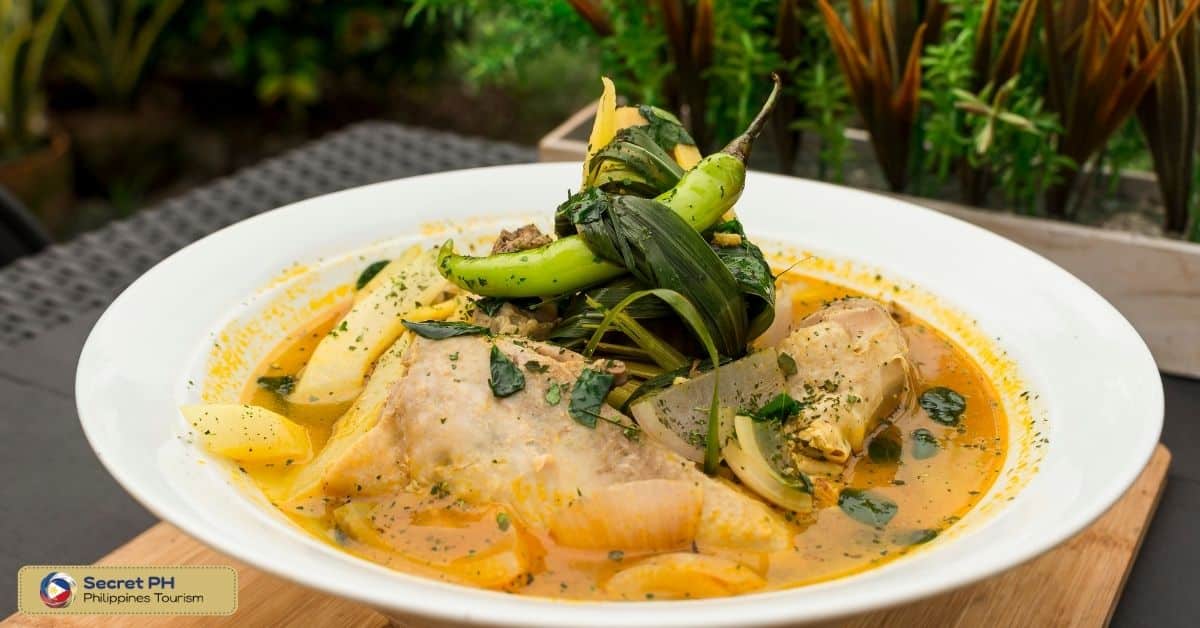
Cooking Filipino Cuisine at Home: Tips and Tricks
Cooking Filipino cuisine at home can be a fun and rewarding experience. While it may seem intimidating to some, understanding the basics of Filipino cooking techniques and ingredients is key to unlocking the flavors of this vibrant culture. Here are some tips and tricks for creating delicious Filipino dishes in your own kitchen:
1. Start with a Flavorful Base – The cornerstone of Filipino cuisine is the flavor-packed “sawsawan,” which typically consists of garlic, onions, ginger, and other aromatics. Start by sautéing these ingredients in oil for a flavorful foundation that can be enhanced with other seasonings and spices.
2. Get Creative with Traditional Ingredients – Filipino dishes are typically made up of a combination of traditional ingredients such as coconut milk, pork, chicken, shrimp, and various vegetables. Feel free to experiment with substituting some of these ingredients for vegan or vegetarian alternatives.
3. Use Quality Ingredients – When it comes to Filipino cooking, quality is key. Make sure to use the freshest possible ingredients for the best flavor.
4. Learn to Balance Flavors – Filipino cuisine is all about balance, so it’s important to understand how flavors work together to create a harmonious dish. Experimenting with different combinations of sweet, sour, salty, and spicy can help you find the perfect balance for your dish.
5. Use Sweet and Sour as a Guide – Sweet and sour flavors are prominent in Filipino cuisine, so using them as a guide can help you create delicious dishes that have depth and complexity.
6. Serve with Rice – A staple of Filipino cooking, rice is the perfect side dish to complement any meal. Try different types of rice for interesting flavor combinations.
7. Finish with a Sauce – Add an extra layer of depth and flavor to your dishes by finishing them with sauces like soy sauce, fish sauce, or patis.
8. Have Fun – Filipino cuisine is all about having fun in the kitchen and experimenting with different flavors and techniques. Don’t be afraid to try something new – you never know what delicious surprises await!
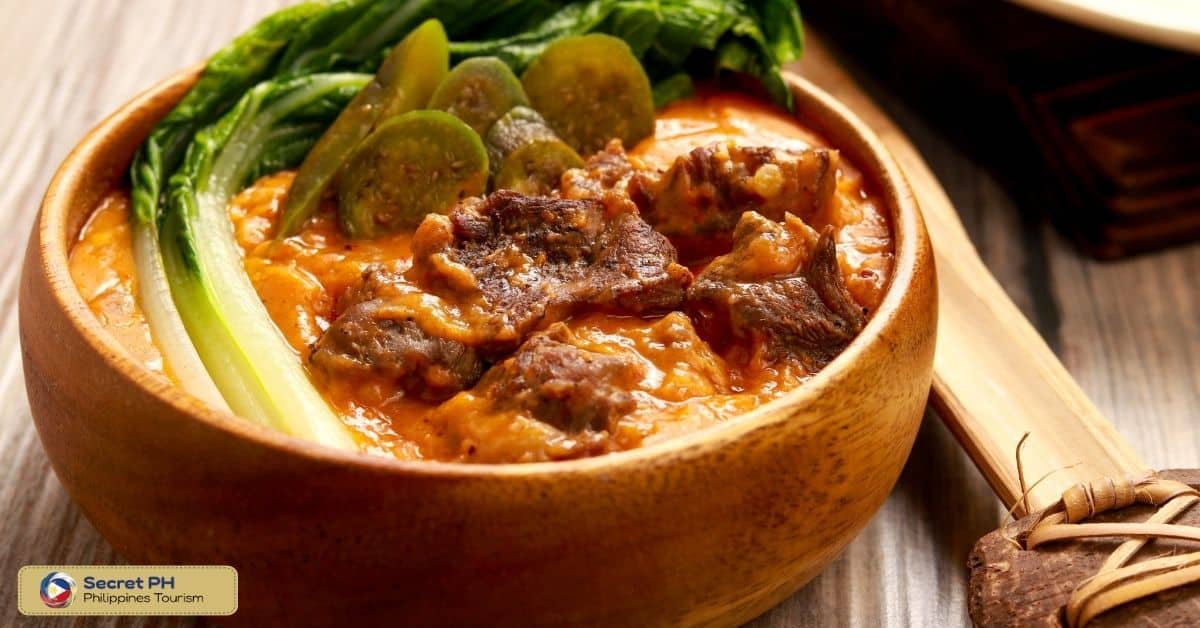
In conclusion
Filipino cuisine is full of delicious and diverse flavors that can be enjoyed by foodies around the world. From classic street food dishes to vegan and vegetarian options, there’s something for everyone to enjoy in this vibrant culture. With these tips and tricks, you’ll be well on your way to creating delicious Filipino dishes at home. So gather your ingredients, fire up the stove, and enjoy the flavors of Filipino cuisine!



